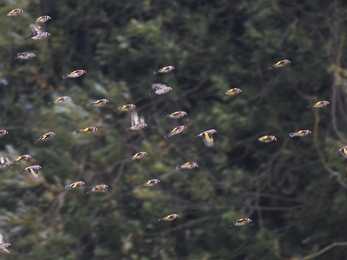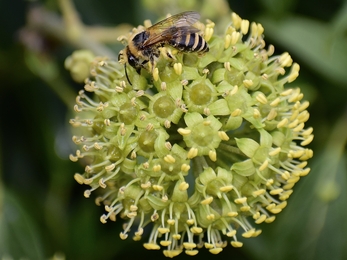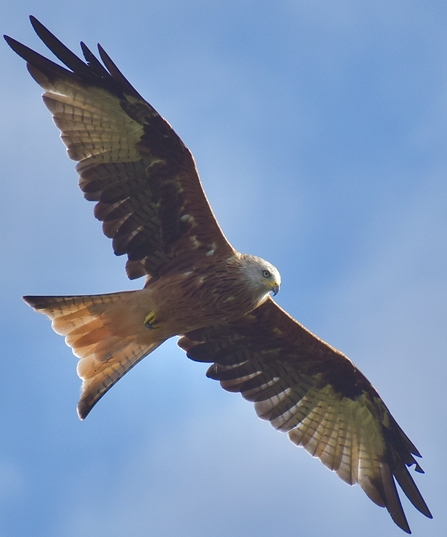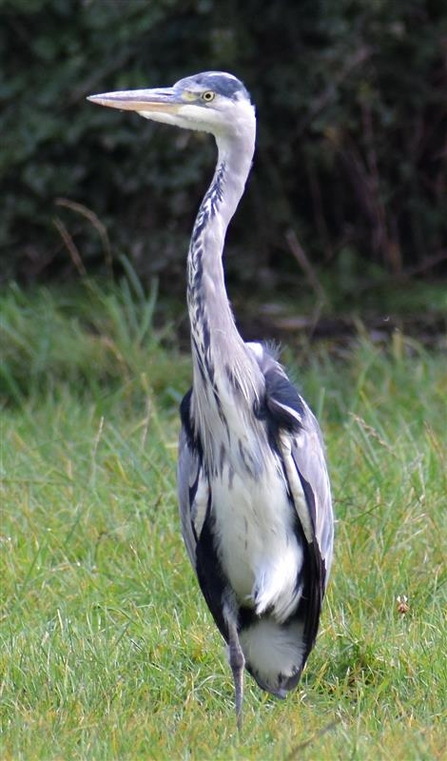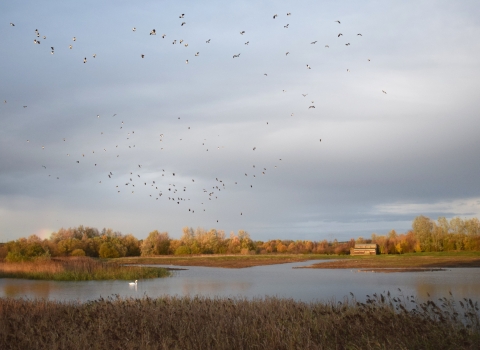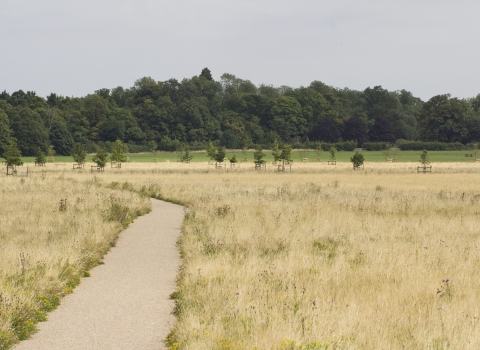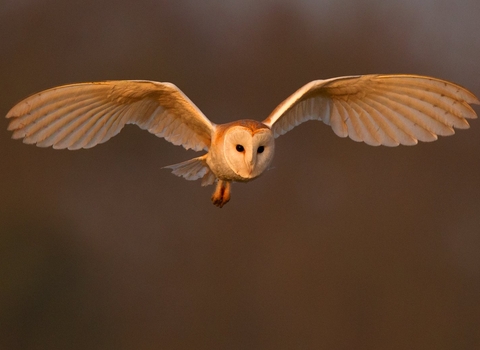It has certainly turned rather autumnal now, after the heat of the ‘Indian’ summer finally gave way to some more seasonal temperatures, and it's been rather wet too!
Before it all changed, it was lovely seeing the last of the remaining dragonflies, butterflies and bees feeding on late flowering plants like ivy. These plants are invaluable and provide much needed nectar sources this time of year. Insects like the wonderful ivy bee were feeding busily at Trumpington Meadows reserve on a recent visit. And whilst intently watching the bees I almost missed the beautiful male migrant hawker that was resting on a leaf, literally under my nose.
I also enjoyed watching a large flock of goldfinches - or ‘charm’ as the collective noun would have it - feeding on seed heads in the meadow. There were at least 30 birds whizzing around the grassland dropping down onto patches of old flower heads, chittering away together. They’d forage briefly on the tops before lifting off en masse and descending to the next patch. It was a great depiction of why it's so important not to over-tidy our gardens in the autumn. Hollow stems, berries, haws and seedheads provide vital food and habitat for many species over the colder months.


